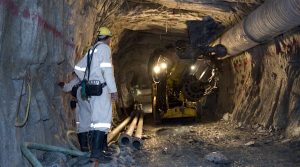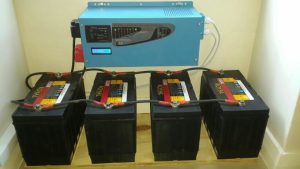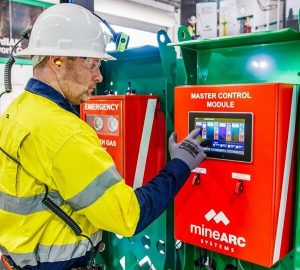In South African mining facilities emergency lighting is an important safety measure. During power cuts, it provides lighting backup. In order to ensure whether the required areas are lit even during power cuts these systems are placed throughout the Mining facilities in South Africa.
They are typically battery powered. Priority is given to people’s evacuation during emergencies like structural collapses, fire or explosions. The emergency lighting helps in such situations by providing lights during such emergencies.
These systems help to decrease risk during evacuations by providing backups. For the well-being of mining personnel the existence of reliable emergency lighting systems is very important in the mining facilities of South Africa.

In order to ensure the safety and well-being of the workers the South African mining facilities should follow the regulatory standards provided by the government. These standards are set by regulatory bodies like the Department of Mineral Resources & Energy (DMRE) and enforced through legislation like the Mine Health and Safety Act (MHSA).
The main objective of these regulations are to ensure whether the emergency lighting systems are in place including testing, maintenance and installation is done in the proper way.
Common standards include lowering the lighting levels, duration of backup power, location and placement of fixtures, regular testing and maintenance protocols and detailed record-keeping.
If the company fails to follow the protocols they will face penalties, fines or even closure of their mining company. It is required for a mining company to follow the required protocols in order to keep their employees’ life at safety.
Emergency lighting systems in South African mining facilities are essential for worker safety in hazardous environments.
These systems include fixtures, backup power sources, control systems, wiring, distribution networks, exit signs, self-testing and design. Strategic placement ensures adequate illumination during power outages, while advanced features like remote monitoring and diagnostics ensure efficient power distribution.
South African mining facilities require critical emergency lighting accessories to improve worker safety during emergencies. These accessories ensure clear guidance, continuity of illumination and the integration of emergency lighting into response plans ensuring a swift and effective response.
These include high-visibility signage, battery backup systems, emergency exit route lighting, emergency response plans, maintenance protocols, advanced monitoring systems and training programs.
High-visibility signage and markings are very important in South African mining facilities for guiding workers to safety during emergencies. Featuring bold colors, they are strategically placed along escape routes, exits, and corridors. Regular maintenance and inspection are crucial for their effectiveness. Integrating with emergency lighting systems enhances their reliability and effectiveness.
Battery backup systems are very important for mining facilities. Its main function is to provide reliable power if the main power line is the main reason for failure. These batteries are made up of rechargeable batteries. 
They are required to maintain it regularly. Batteries such as lead-acid, nickel- cadmium and lithium-ion are used. Duration of the lighting system is determined by the capacity of these systems.
During an emergency they provide lighting without any interruption because they are attached with emergency lighting systems. Nowadays modern battery backup systems have different monitoring and alert features.
It helps the operator to monitor the battery health and take correct actions accordingly. It is very important to follow the rules and regulations set by the company.
In mining facilities the emergency exit route lighting plays an important role during emergencies. It helps in evacuations during emergencies during any kind of disaster. It provides lighting in all the specified areas for emergency exits like corridors, tunnels.
In order to navigate the workers to safety the emergency exits are used. The lights are designed in such a way so the workers can visibly see the exits. They use bright and contrasting colors so it would be easy for the workers to find the exits.
In order to provide continuous lighting and guidance the system is kept along the escape routes at a regular interval. Various types of lighting fixtures, such as LED luminaires, fluorescent tubes, and built-in exit signs, are used. For its functionality and reliability regular maintenance and testing are very important.
For coordinating evacuation procedures and ensuring the safety of personnel in South African mining facilities emergency response plans play an important role . These plans provide clear guidance to each and everyone working in the mining field. They will be aware and know about how to respond to emergencies, minimizing risks to personnel, property, and the environment. They are developed by consulting with the stakeholders of the company.
In order to be accountable for changes in the facility’s operations, personnel, or regulatory requirements regular reviews and revisions are necessary. Emergency response plans are important for maintaining visibility and minimizing risks during evacuations.

In order to ensure their reliability and functionality of the emergency lighting systems in South African mining facilities require regular maintenance and testing. The protocols included are scheduled inspections, functional testing, battery testing, cleaning and maintenance, documentation and record-keeping and an emergency lighting logbook.
Before they compromise the system’s effectiveness during emergencies the procedures help identify and address issues. Mining operators must conduct regular Inspections of fixtures, batteries, control systems and wiring and conduct functional tests to verify their operation in simulated emergency conditions.
Cleaning and maintaining fixtures removes dust and debris. Battery testing ensures the system can provide power during emergencies. The logbook shows the evidence that the company has followed the required rules and helps track system performance from time to time.
For the reliability and effectiveness of emergency lighting systems in South African mining facilities the advanced monitoring and alert systems are very important. It enables operators to detect faults or failures and take timely intervention and maintenance actions because these systems provide real-time information about system performance .
They consist of sensors, monitoring devices, control panels and alert mechanisms. Real-time monitoring helps the operators to identify the potential issues and take proactive measures before they escalate into emergencies. The faults in emergency lighting systems are detected by fault detection and diagnosis tools.
It alerts personnel automatically through visual or audible alarms, notifications, or remote alerts. The operators can view the real-time data, diagnose issues and initiate corrective actions without onsite presence with the enable of remote monitoring and management.
Historical data analysis helps to optimize maintenance schedules and identify recurring issues. Integration with building management systems enhances overall efficiency and safety.
In order to understand the importance of emergency lighting and respond accordingly during emergencies training and education must be given to the South African mining workers. Emergency procedures, evacuation routes and the use of emergency lighting equipment must be included in the programs along with instructions.
In collaboration with safety experts, emergency responders, and regulatory authorities, covering relevant topics and meeting regulatory requirements the curriculum should be developed. For reinforcing theoretical knowledge and building practical skills hands-on training exercises, such as drills and simulations, are essential.
Programs should be tailored to the specific roles of different personnel, including emergency response teams, safety officers, and supervisors. To ensure familiarity with emergency procedures the language and literacy considerations should be considered, and regular refresher training should be conducted. In order to enhance the quality of training and education programs evaluation and feedback mechanisms should be included.
Case studies are important in analyzing the effectiveness of emergency lighting systems in South African mining facilities. They provide data on the performance, reliability and effectiveness of these systems during emergencies.
Specific Incidents such as power outages, fires, and explosions, and factors such as lighting design, backup power performance, signage visibility and personnel response actions are analyzed by the case studies.
In order to improve the reliability and effectiveness of emergency lighting systems the lessons learned from these studies can inform the development of new protocols and technologies.
They also highlight best practices used during emergencies, enhancing emergency preparedness and minimizing the impact of emergencies. For maintaining the resilience of emergency plans and equipment continuous improvement is essential.
In conclusion, the use of critical emergency lighting accessories in South African mining facilities is crucial for worker protection. Battery backup systems, high-visibility signage, advanced monitoring systems and comprehensive training programs are included in . enhancing worker protection. Reduction of accidents and injuries is effective in the working place if the agency invests in these kinds of systems demonstrating commitment to safety and regulatory compliance. Continuous evaluation and adaptation to future trends further enhance worker protection.
Emergency lighting accessories are essential for mining facilities in South Africa because they provide visibility during power outages or emergencies, guiding personnel to safety and reducing the risk of accidents or injuries.
Key components of emergency lighting accessories include battery backup systems, high-visibility signage, advanced monitoring systems, and comprehensive training programs.
Battery backup systems ensure continuous illumination during power outages, allowing personnel to navigate safely and evacuate in emergencies.
High-visibility signage and markings help guide personnel to emergency exits and assembly points, even in low-light conditions or smoke-filled environments.
Advanced monitoring systems provide real-time information about the status of emergency lighting systems, enabling timely intervention and maintenance to ensure uninterrupted functionality.
Not sure what you required for your lightining project ?
Get in touch with us for FREE consultation.